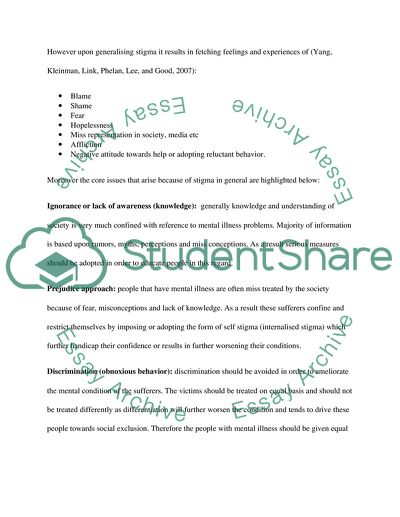Cite this document
(The Definition of STIGMA by Erving Goffman: Mental Illness in Our Essay, n.d.)
The Definition of STIGMA by Erving Goffman: Mental Illness in Our Essay. Retrieved from https://studentshare.org/psychology/1791392-what-is-meant-by-stigmaand-does-it-link-with-the-concept-of-social-exclusions-and-what-are-the-implications-for-policy-and-practice
The Definition of STIGMA by Erving Goffman: Mental Illness in Our Essay. Retrieved from https://studentshare.org/psychology/1791392-what-is-meant-by-stigmaand-does-it-link-with-the-concept-of-social-exclusions-and-what-are-the-implications-for-policy-and-practice
(The Definition of STIGMA by Erving Goffman: Mental Illness in Our Essay)
The Definition of STIGMA by Erving Goffman: Mental Illness in Our Essay. https://studentshare.org/psychology/1791392-what-is-meant-by-stigmaand-does-it-link-with-the-concept-of-social-exclusions-and-what-are-the-implications-for-policy-and-practice.
The Definition of STIGMA by Erving Goffman: Mental Illness in Our Essay. https://studentshare.org/psychology/1791392-what-is-meant-by-stigmaand-does-it-link-with-the-concept-of-social-exclusions-and-what-are-the-implications-for-policy-and-practice.
“The Definition of STIGMA by Erving Goffman: Mental Illness in Our Essay”, n.d. https://studentshare.org/psychology/1791392-what-is-meant-by-stigmaand-does-it-link-with-the-concept-of-social-exclusions-and-what-are-the-implications-for-policy-and-practice.


